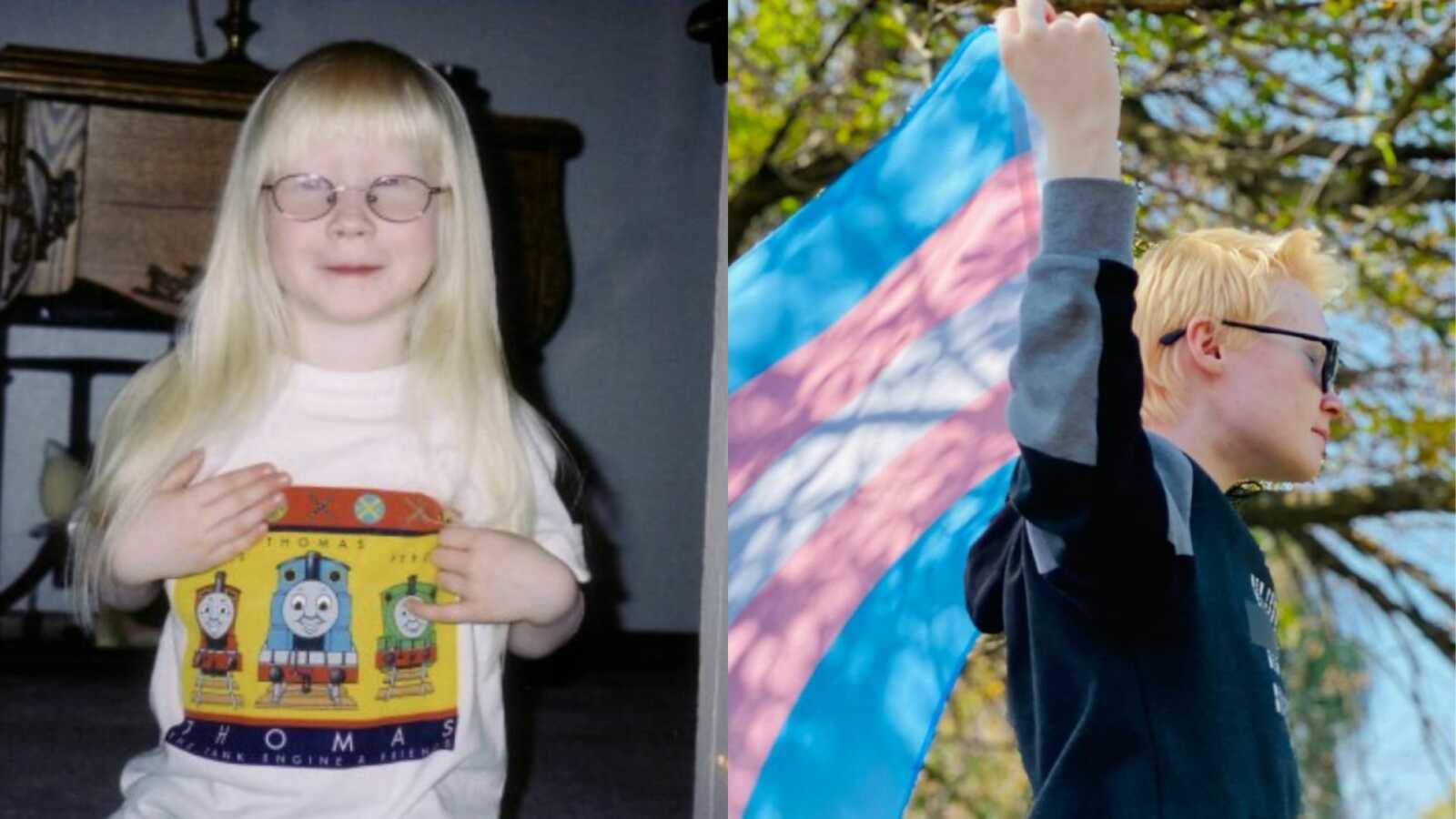Life With Albinism
“I was born on March 1st, 2003. I surprised everyone by being the whitest, blondest baby in the hospital. I have a rare genetic condition called Oculocutaneous Albinism type 2. Both of my parents carried the recessive gene, resulting in me being the first, and only, person in my family with Albinism.
Albinism causes a protein deficiency impacting the formation of the retina in the eye and pigment in the skin, hair, and nails. I have pale skin, light blonde and white hair, and blue/purple eyes. Albinism comes with many contributing factors that result in a visual impairment including light sensitivity, astigmatism, nystagmus, and forms of strabismus. I was born with 20/125 vision that has declined over time beyond the threshold of being legally blind (20/200). The lack of pigment means the skin leaves no protection from UV rays putting a person with the condition at extremely high risk for sunburn. This poses a higher chance for people with Albinism to develop skin cancer. Let’s just say I unwillingly grew up slathered in sunscreen.
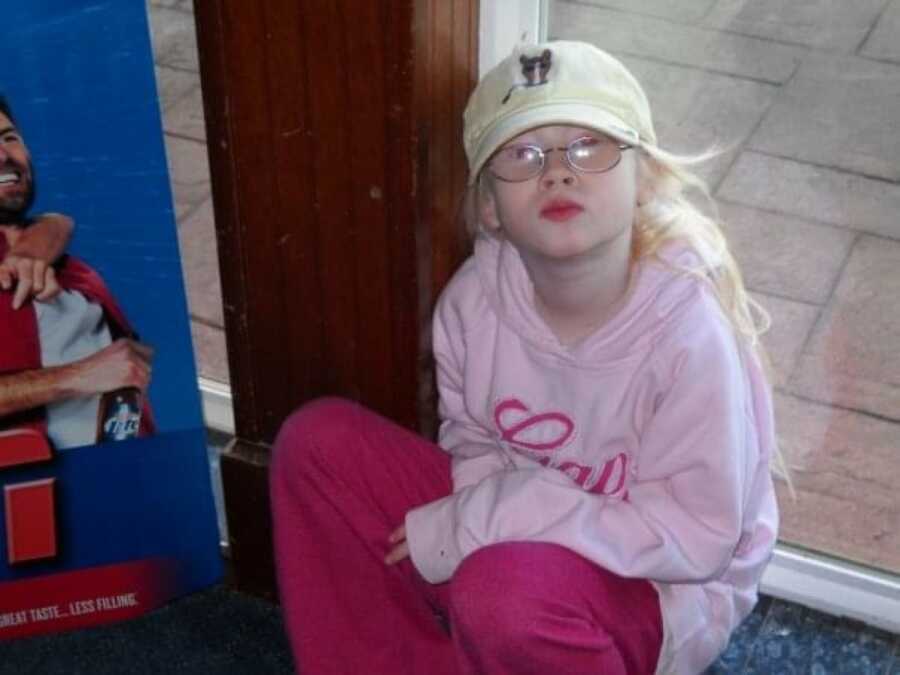
Disabilities In School
I grew up in a small town in Iowa and attended a public school which I graduated from in 2021. To accommodate for my visual impairment I had an individualized educational plan that consisted of requirements for teachers to provide me with large print materials along with many other accommodations. The honest truth is that the American school system is not designed for disabled students. I had to put in a lot more time and effort than my abled peers because I was often having to fight for the school to remember to provide me with the accommodations I needed to learn. I often felt helpless in the classroom as I was left out of activities and not provided the same ability to follow along with the content. I would often spend many hours after school trying to make up the unwillingly lost time.
For the most part, I was able to persevere as an A and B student. I constantly felt like I was struggling and dragging behind the bus, but I always found a way to make it through and manage to pass. I was one of the few disabled students at the school, as well as one of the only current students with a visual impairment. I attended this school from start to finish of my K-12 career. All of my peers that I grew up with knew of me, but would often avoid me because they didn’t know how to interact with someone who was different. It was extremely hard to fit in socially and physically in regard to my appearance. I was the quiet kid who was eager to get out of that small town to a more diverse place where I wouldn’t be so different.
Home Life
At home, I lived in a dated red brick house with my mother who was a single parent. She was often busy, and spent a lot of time away from home, resulting in me having to spend a lot of time alone which made me dread the place more by the time I was a teenager. Being a blind teenager in a small town without access to transportation can feel restricting and lonely. By the time I was in middle school I was diagnosed with mental health conditions such as anxiety, depression, and PTSD due to the rough conditions I experienced at school and at home.
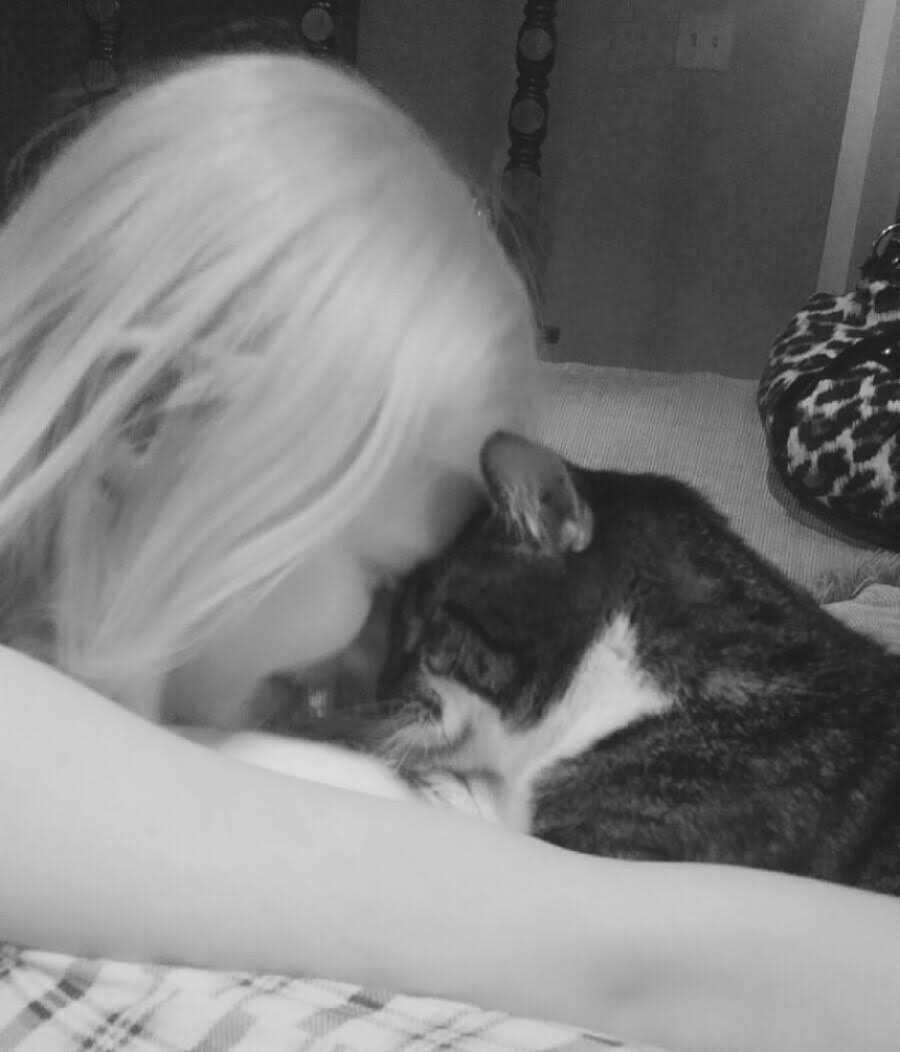
I didn’t feel like I had a community of my own at home, but I found community and friends through the Iowa Braille School as well as the National Organization for Albinism and Hypopigmentation (NOAH). Across the nation, there are specialized schools for the blind and visually impaired, but unfortunately, Iowa’s school for the blind was shut down in 2012, and no longer served as an educational institution. To make up for the needed educational support for blind/VI children they would send Teachers for the Visually Impaired (TVI) to meet with students at their public schools. My first assigned TVI started working with me before I even started preschool, all the way until my freshman year of high school when she then retired and I was assigned a new, equally great teacher who helped me through high school. They helped communicate my needs to teachers as well as teach me skills such as Braille. They were some of the few people who advocated for me in school and I wouldn’t have been able to make it through without their help.
Although the Iowa Braille school wasn’t up and running, they still held summer camps for blind/VI students to attend from all across the state as well as adaptive sports teams. Once I was in 7th grade I joined many adaptive sports. Some that could be slightly adapted such as track and field, swimming, and cheerleading as well as sports that were specifically designed for the blind such as five-a-side soccer, beep baseball, and goalball. We would compete against other schools for the blind in the Midwest, traveling to different states for conferences every couple of months. Although we didn’t have a school in Iowa that we could all actively attend and practice together at, we worked hard and won many championships despite the advantages of the schools we were competing against.
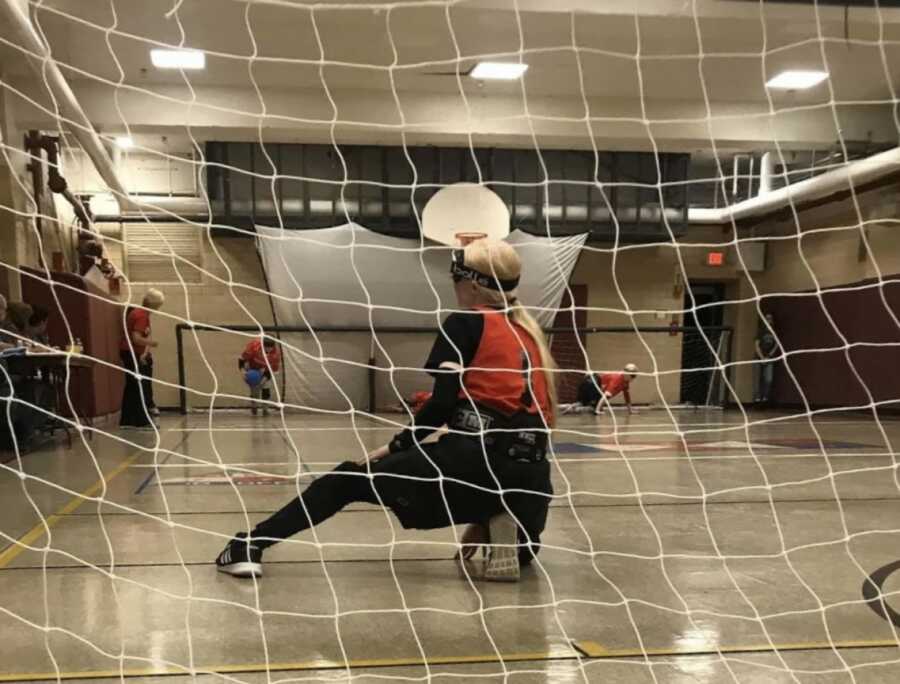
Through these activities, I met many blind/VI friends, as well as my current boyfriend of 7 years who also has Albinism. I am extremely grateful for the opportunities I had through the Iowa Braille school, as well as one of the annual NOAH conferences I was able to attend in 2018 bringing together hundreds of people with albinism from across the country. It was crazy to see so many people with Albinism all in one spot considering 1 in 20,000 people in the U.S. has the condition.
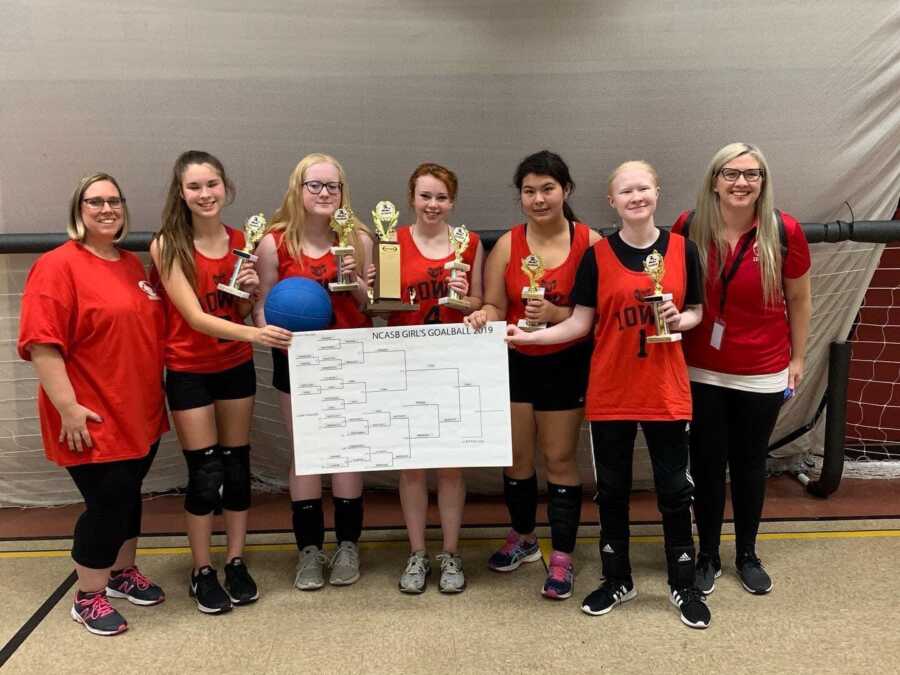
Coming Out As Transgender
Outside of my experience growing up disabled, I always knew I was different in many other ways. Through experiences I had growing up competing on female sports teams and trying to fit into society’s standards on how I should identify, I knew I wasn’t the same. I was assigned female at birth (AFAB), but I never felt like a girl. I was the ‘tomboy’ who always wanted to wear pants and pull my long hair back so I could hide it. I didn’t like the way my clothes fit my body, but there wasn’t much that I liked about myself at the time anyway. I didn’t know why I felt that way because I didn’t have the language to define who I was. I grew up desperately trying to fit in, and meet people’s standards, so I didn’t want to think too much more about parts of me that were different.
By the time I was 16, I realized these weren’t just weird things about me, and keeping them in wasn’t going to make them go away. I was finally ready to start figuring out who I was. I came out as transgender during my junior year of high school in the midst of the Covid-19 pandemic and school closure. My biggest supporter was my boyfriend, despite our relationship starting as a cis/straight couple back in 2015. We grew together as we learned more about our identities. We both realized that our sexualities didn’t have bounds. Today he identifies as Pansexual and I identify as Queer as well as Trans-masculine.

I lost some friends as I progressed into my transition, but I was so much happier being my true self, and if they weren’t going to support my happiness then they didn’t truly love me for me like they claimed they did. I started to socially transition by changing my name and pronouns. By my senior year in high school, I thought I would start my medical transition once I was out of there and off to college in a more accepting place, but once I turned 18 in March 2021 I realized I wanted to take more control of my life and my transition.
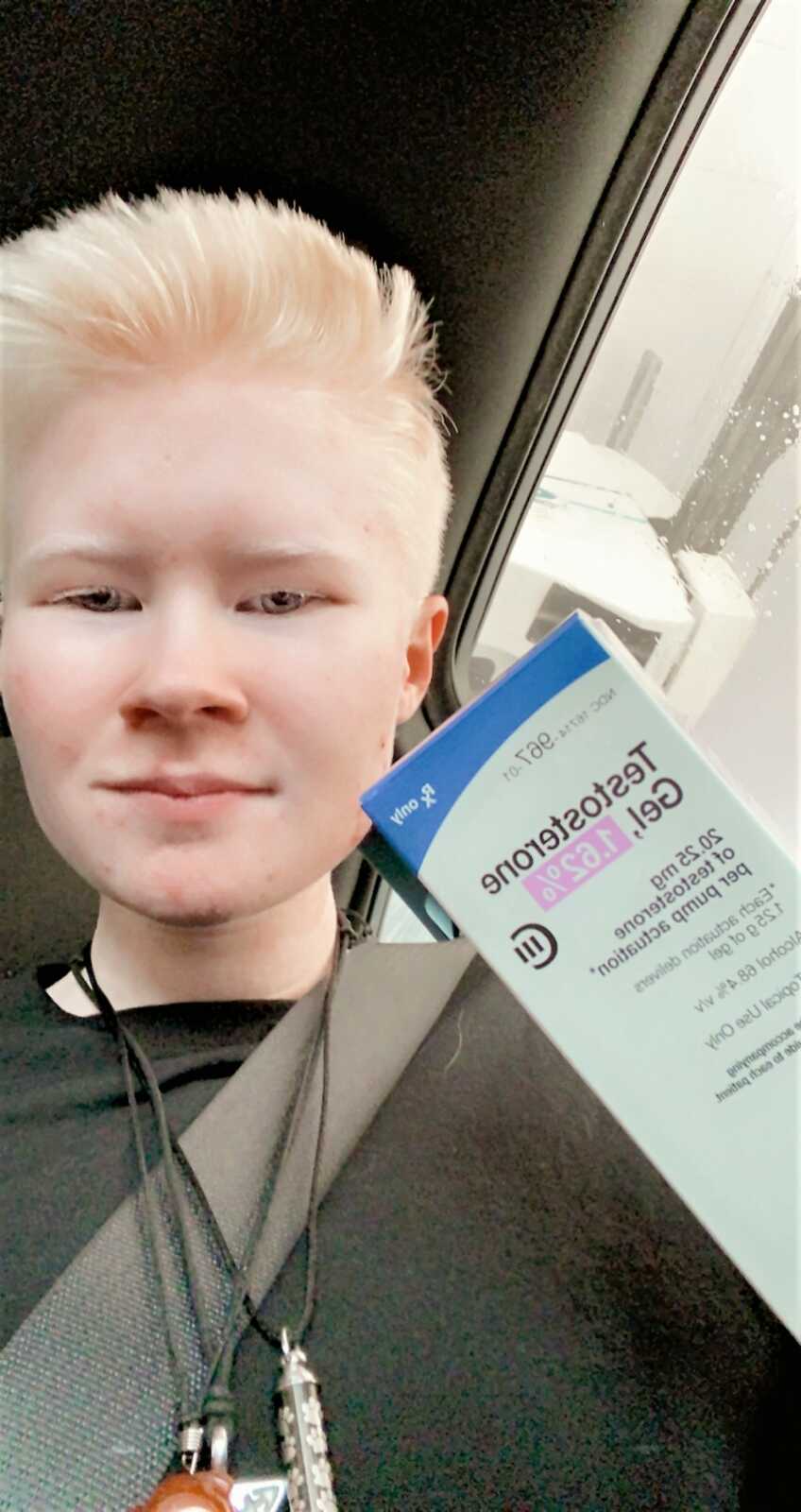
On March 1st, 2021 I started many processes to further these changes such as starting the paperwork to legally change my name, applying for governmental SSI in regard to my disability, and attempting to start hormone replacement therapy. I had to do most things independently growing up, but this felt different. This felt like I was finally doing something for me, and only me. By April I started testosterone, and in May I officially finished the process to have my full name legally changed just in time for my high school diploma. Then by the end of the month came the time I graduated high school, something I thought I would never make it to.
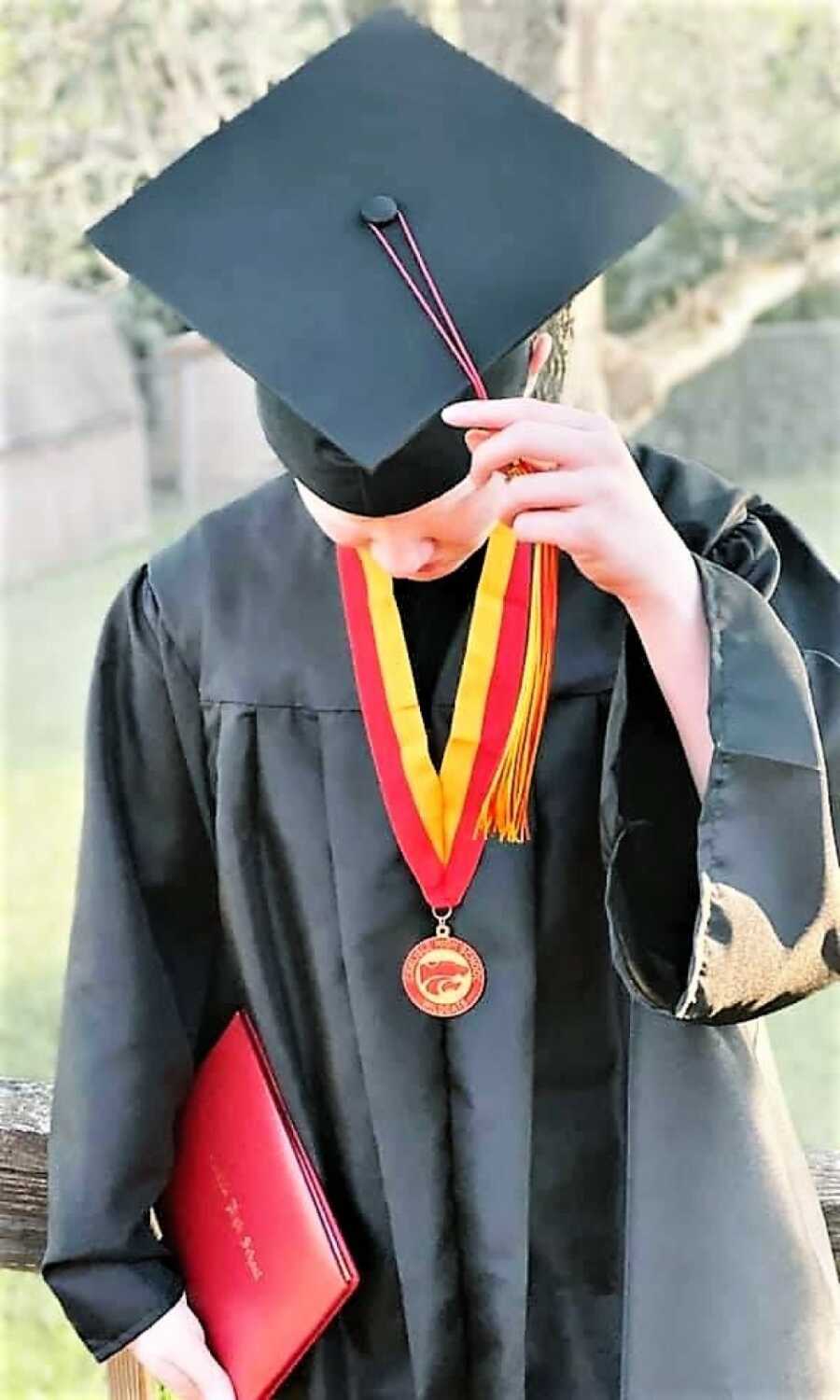
I couldn’t imagine my life beyond this same routine of unhappiness, but I finally reached the point where things would have the opportunity to change. In June I got accepted to the college I knew I wanted to attend since the beginning of high school, Columbia College Chicago, to study photography. I always dreamed of living in the city. A place where everyone is different and diverse. A place where I would have more of a chance to live a life that was in my control, have access to public transit, and attend a liberal arts school full of other diverse, queer artists like myself.
You might not expect to see very many blind photographers out there, but my blindness serves as my photographic drive. I use photography to see the world. The photos I capture help me see details in the world around me that I’ve never gotten a chance to see with the naked eye. As a kid, I started by taking photos of landscapes and my pets at home. Then over the years, I started to explore more with my photographic technique more and create unique art from what I saw in the world.


My work often consists of bold colors, texture, and detail. When I’m capturing the photo I cannot see the details of exactly how it’s going to turn out. I photograph scenes I’m drawn to or am curious to see more detail of, and then get to learn from the results of the photo. I currently don’t have many adaptive naturals that can help me navigate photography like a sighted person, so I have to depend more on memory than sight when it comes to working the technical parts of a camera. I still have more opportunities to learn, and I’m grateful for my professors at Columbia that have been so open to helping navigate this with me.
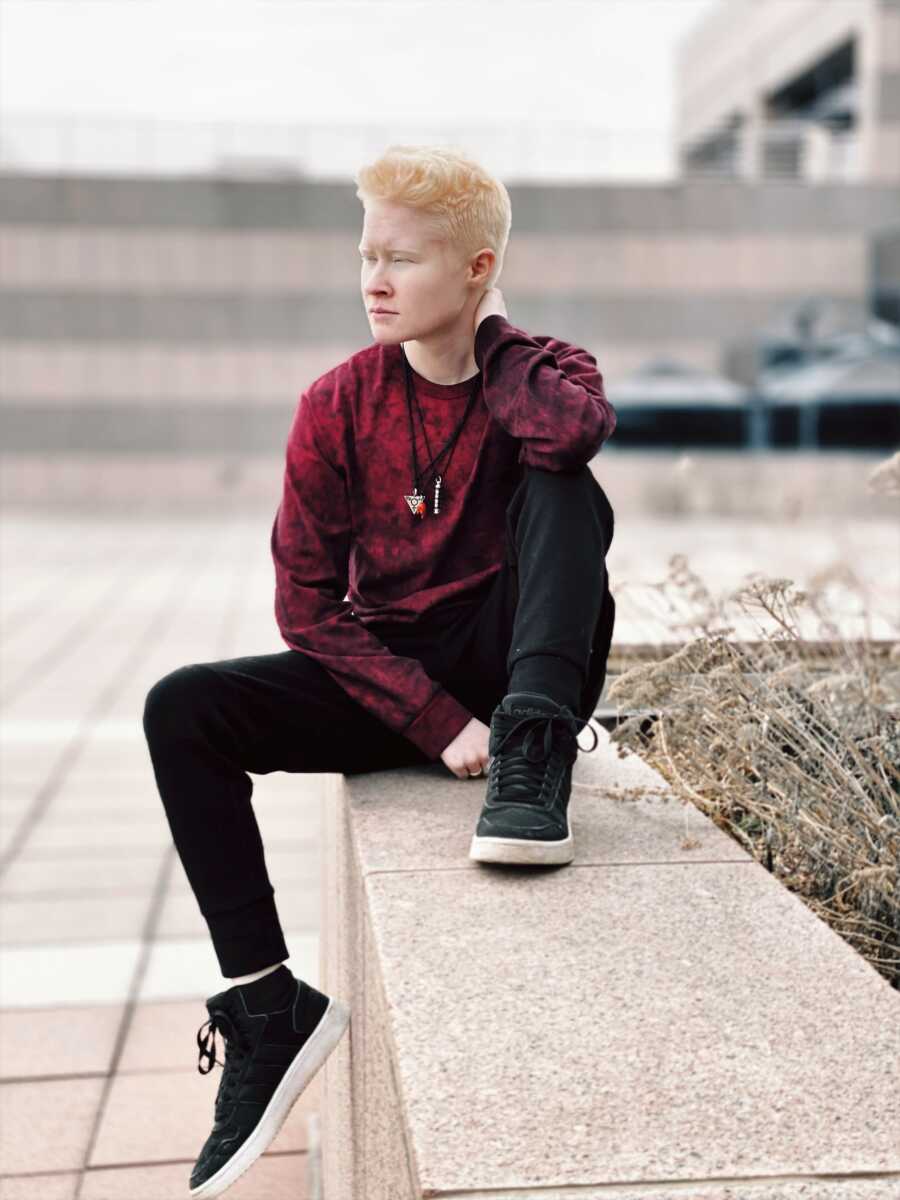
Life Now
My first year at Columbia was a huge change in my life. I was now living in the city in a studio apartment with my cat Calvin. I met a couple of new friends and progressed further into my transition in a place where I was much more accepted. I was able to more openly explore my identity and personal expression. I finally felt more free to be myself. There’s not a single day where I regret the decision to transition and start hormones. I feel so much happier in my body. If I would have known anytime before the age of 16 that this was all it took to love myself more, maybe I would have been happier. I knew from the start that I felt more comfortable in masculine identity, but I wasn’t allowed the space to understand myself while growing up in a cisgender heteronormative society that was constantly telling me otherwise. What I’ve learned about myself in recent years is that I don’t feel any need to restrict my gender identity or sexuality. I didn’t transition to become a binary ‘man.’ I’m just simply choosing to live how I want to live in whichever manner I feel most comfortable. I’m proud of how far I’ve come and I hope to be an example for many that your differences can be your power.”
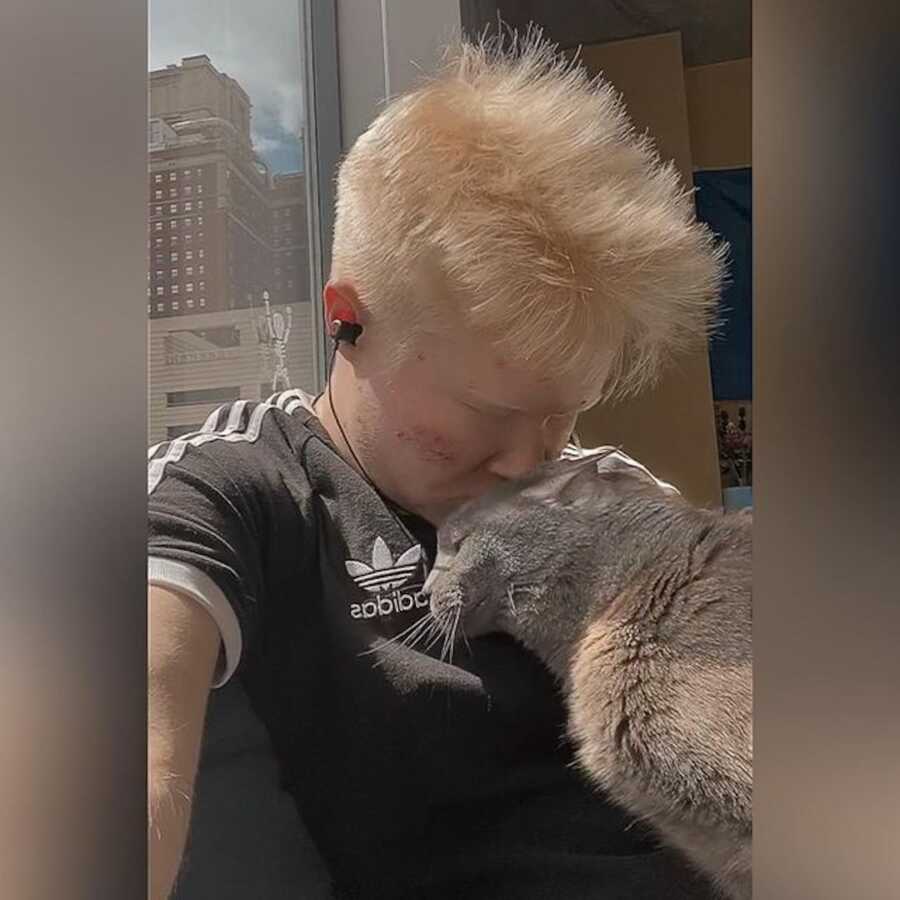
This story was submitted to Love What Matters by Finn Schulz from Iowa. You can follow his journey on Instagram. Submit your own story here. Be sure to subscribe to our free email newsletter for our best stories, and YouTube for our best videos.
Read more stories like this here:
‘Our baby had a head full of hair — WHITE AS SNOW’: Mom’s shocked reaction to albino newborn
Help us show compassion is contagious. SHARE this story on Facebook with family and friends.

